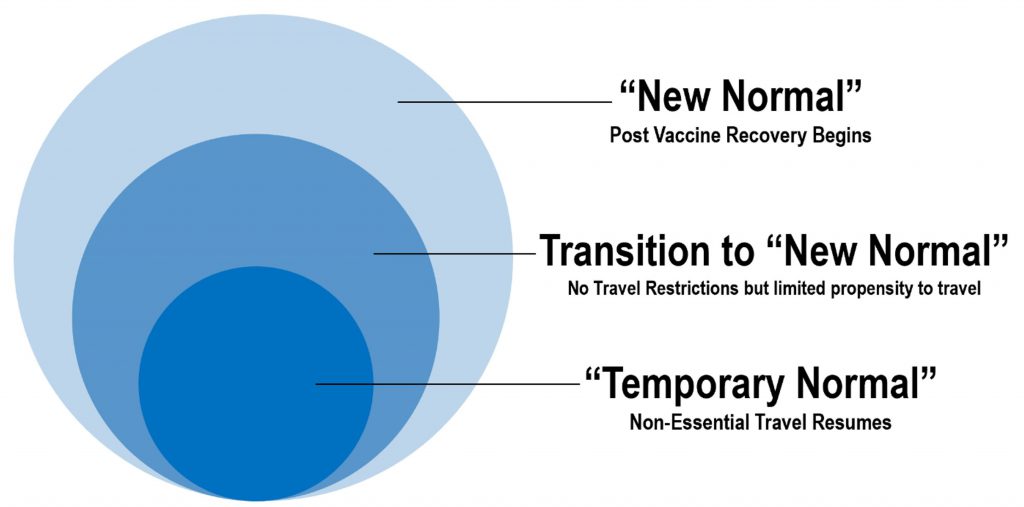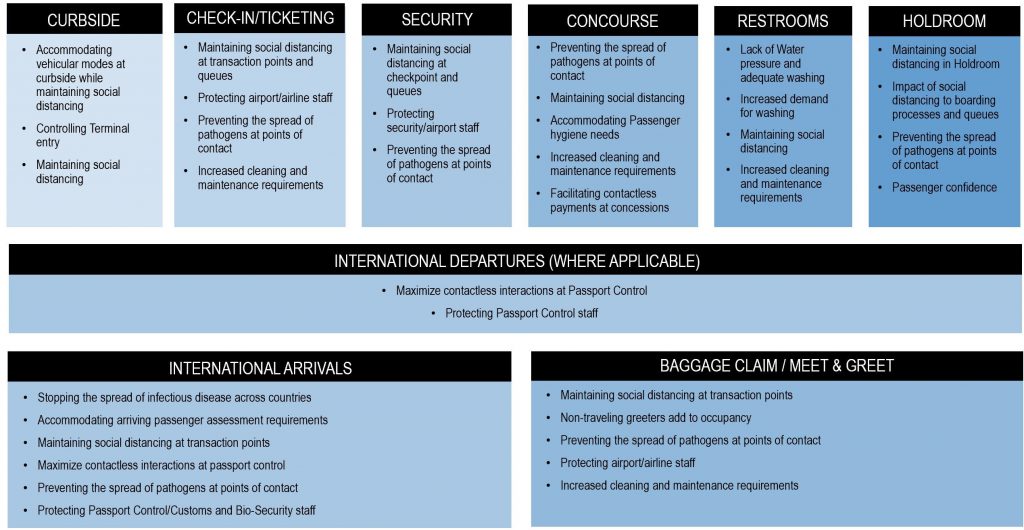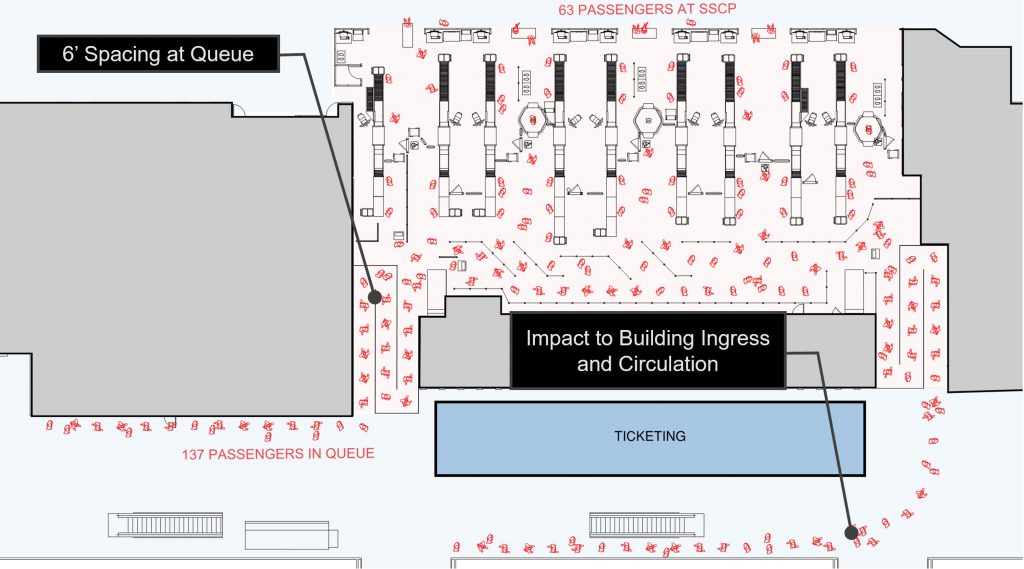The Three Stage Road to Recovery for Terminal Facilities
As the Covid-19 pandemic evolves, so will the airport’s response. Airports should focus initially on easy deployable, short-term actions. Targeted actions resulting with solutions that prioritize the safety of both passengers and staff along with an emphasis on promoting a consistent passenger experience is imperative to restore public confidence. As non-essential travel resumes, airports will enter a “Temporary Normal” phase, where social distancing requirements challenge the spatial capacity of facilities. In response to these challenges, airports should plan for an evolving response and develop strategies for accommodating growing passenger demand under unpredictable and fast changing conditions. Ultimately when a vaccine becomes widely available; airports will be unencumbered by the immediate impacts of Covid-19. However, while many aspects of the airport will return to a pre-COVID-19 state, several will be forever changed.
The diagram below represents the three phases airports will experience on the road to recovery.

“Temporary Normal”
There are several challenges that airports will face as non-essential travel resumes including: addressing public confidence, managing the impacts of social distancing, accommodating new norms for personal hygiene, and responding to the priority to keep passengers and staff safe. As air-travel increases, airports will need to implement several immediate measures to ensure public confidence to maintain a safe and healthy environment. Ideally a nationally coordinated response is needed to create a consistent experience for the traveling passenger. At the very least, State and airport/airline collective and consistent collaboration will be needed as previously discussed in the last edition of the L&B Lab Weekly. Initial solutions should focus on low-tech applications and operations that are immediately deployable in all aviation facilities.
The diagram below illustrates the primary challenges that various terminal locations face as passenger demand begins to increase.

Transition to “New Normal”
As peak volumes of passengers start to recover and social distancing is required, facilities will begin to experience added stress. While maintaining social distancing in queues and reducing seating in holdrooms and concession spaces is feasible under the current limited activity levels, there will be an “inflection point” where the load factors will increase to a point that social distancing is not possible within the constraints of the facility. This will be unique for each facility based on factors including terminal configuration and checkpoint throughput. At this point, either demand will need to be managed through some form of metering or social distancing requirements will need to be relaxed.
The plan diagram below depicts the impact of social distancing at a typical security checkpoint queue. With only 200 passengers spaced six feet (two meters) apart, you can see the impact of overflow queuing to the ticketing lobby and adjacent spaces. How will airports respond to rebounding demand while maintaining social distancing? Simulation modeling will undoubtedly become a key tool for airports to test and modify their facilities and operations as conditions change during this transition period. Spatial capacity competes with the requirements of social distancing.

“New Normal”
Assuming a vaccine is developed, airports will begin to return to a more pre-pandemic state. While this will look familiar, it will in reality be the “New Normal” with fundamental operational changes to the DNA of Terminal facilities and air-travel. In order to decrease the impacts of future pandemics, critical measures that are implemented and in place will enable airports to respond quickly and decrease the disruptive impact of any future pandemics. It is also evident that awareness of social distancing and good hygiene expectations on human behavior will be our social expectations. International Arrivals will most likely include health-screening measures and the passenger experience will predominantly be touchless and enabled by biometrics and new technologies. The path to “New Normal” will bring several challenges to airports. Airports that proactively employ and plan for transitional phasing will effectively and appropriately respond to the fast-changing realities of COVID-19; action is imperative in order to begin the process of restoring the publics’ confidence in air-travel.
Contributors: Written by Jordan Roos with Matt Lee and Justin Lamond